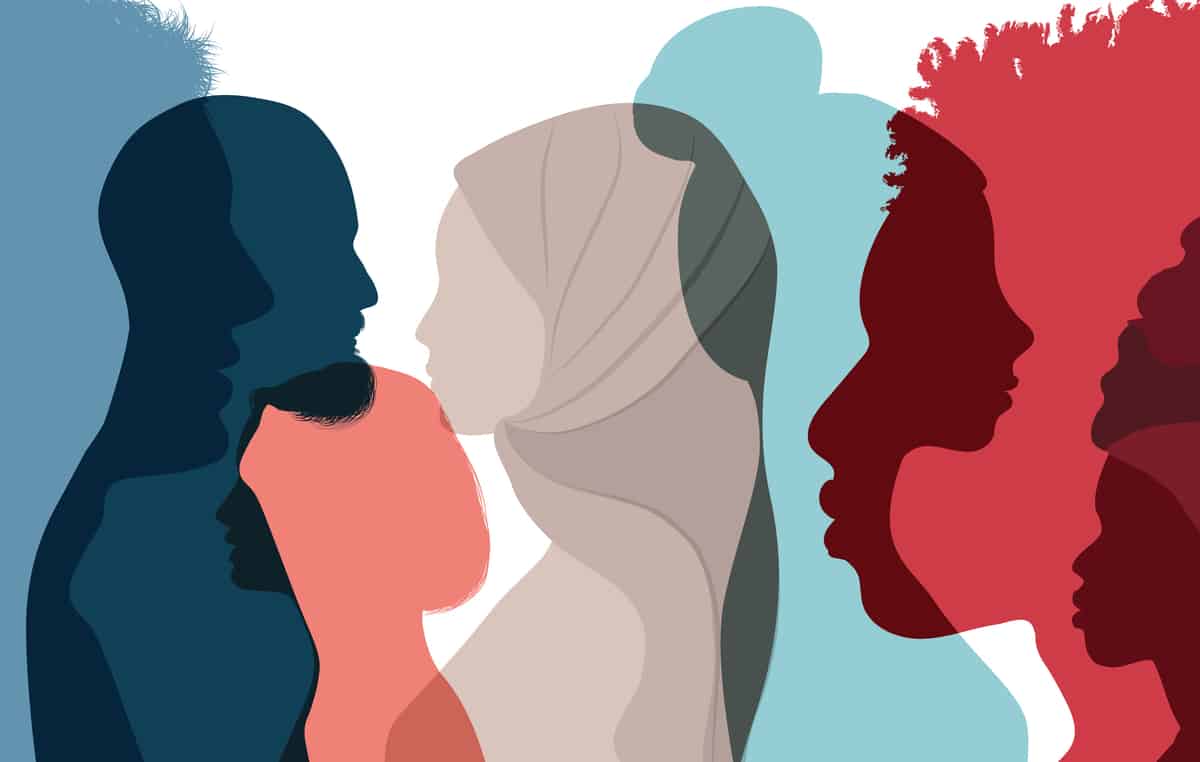
Diversity in the Workplace
At its core, diversity in the workplace means a company’s employees are people of varying races, ethnicities, genders, backgrounds, sexual identities, education and skill levels, to name a few. But diversity in the workplace is more than just hiring people who represent different groups, it means ensuring those individuals have their voices heard in making important decisions.
With that said, the concept of diversity in the workplace goes hand-in-hand with the notion of inclusion. Workable, a hiring platform, has this to say on diversity and inclusion, “You can’t build diverse teams, though, without pairing diversity with inclusion. Nor have you “won” if you now have a diverse team, because inclusion is where the real work begins. Employees feel included in their workplace when they have equal opportunities during the entire employee lifecycle: from the way they’re treated during the hiring process to how they’re being managed, trained, evaluated and promoted.”
Types of Diversity

We listed a few types of diversity above, but the full list of categories to build a diverse workplace is longer than you may think. According to TalentLyft, an online recruiting software company, “There are many different types of workplace diversity. In the beginning, the term diversity was used primarily to address racial and ethnic diversity. However, in recent years, the term workplace diversity has been expanded to encompass many different characteristics…”
TalentLyft’s list of diversity includes:
- Race
- Ethnicity
- Gender
- Age
- Sexual orientation
- Physical abilities and disabilities
- Religion
- Political beliefs
- Education
- Socioeconomic background
- Geographical orientation
- Language
- Culture
- Military service
Why Diversity Matters?

This may seem obvious, but it is imperative to remember that diversity in the workplace is of the utmost importance to succeed in a global economy, especially when it comes to recruiting, retaining and cultivating talent.
Accion, a non-profit devoted to creating a financially inclusive world, puts it this way, “In today’s business world, workplace diversity matters. Higher rates of workplace diversity can help companies evolve, innovate, problem-solve, and be more efficient. Moreover, highly diverse workplaces offer employees a better sense of community, increased worker engagement, and a more positive corporate culture. Workplace diversity is a win across from the board, for employees, employers, and businesses, both large and small. Happier employees, better performance, and more money – it’s a no brainer!”
The Data

There are many different statistics and studies out there regarding the importance of diversity in the workplace. We’ve done the research and want to share some that we feel are particularly insightful.
McKinsey & Company, a managing and consulting firm, did a study that found that more diverse companies perform better financially. According to McKinsey’s findings, “Companies in the top quartile for racial and ethnic diversity are 35 percent more likely to have financial returns above their respective national industry medians.” An article on McKinsey’s data goes on to say, “Our latest research finds that companies in the top quartile for gender or racial and ethnic diversity are more likely to have financial returns above their national industry medians. Companies in the bottom quartile in these dimensions are statistically less likely to achieve above-average returns. And diversity is probably a competitive differentiator that shifts market share toward more diverse companies over time.”
Quantum Workplace, a company that provides employee engagement and performance management software, put together a list of 6 statistics highlighting the benefits of a diverse workplace:
- Cognitive diversity can enhance team innovation by up to 20%.
- 48% of employees believe that respect is the most essential factor for a culture of inclusion.
- 61% of employees believe diversity and inclusion strategies are beneficial and essential.
- 75% of employees think more diversity is needed.
- 60% of companies have metrics in place to measure the success of their diversity and inclusion efforts.
- 67% of job seekers consider workplace diversity an important factor when considering employment opportunities.
15 Diverse Workplace Benefits

As you can tell, research has shown both anecdotally and practically that businesses with a diverse and inclusive workplace are proven to be more successful. The list of benefits for having an inclusive and a diverse workforce is lengthy, and we. are going to share 15 specific benefits that we’ve found to be particularly impactful:
Numbers 1-5 come from Indeed, a worldwide employment website.
- Expanded creativity and problem-solving.
- Better decision-making.
- Increased profitability and productivity.
- Enhanced employee engagement and retention.
- Better company reputation.
Culture Amp, a people and culture platform provides numbers 6-10.
- New perspectives.
- Wider talent pool.
- More innovation.
- Better employee performance.
- Increased profits.
HULT International Business School provides numbers 11-15.
- Local market knowledge and insight makes a business more competitive and profitable.
- Greater opportunity for personal and professional growth.
- A diverse skills base allows an organization to offer a broader and more adaptable range of products and services.
- Cultural sensitivity, insight, and local knowledge means higher quality, targeted marketing.
- Drawing from a culturally diverse talent pool allows an organization to attract and retain the best talent.
How to Improve Diversity/Inclusion in the Workplace

Writing for Forbes Magazine, Ashley Stahl, a career expert and national spokesperson for financial company SoFi, says that “12.5% of the US population is Black, yet only 3.2% of senior leadership positions are held by Black people. In fact, out of the entire Fortune 500, only 4 CEOs are Black (and they’re men)—that’s a whopping .08%— and as of 2018, there have been 1,974 members of the US Senate, but only ten have been Black.
Stahl lays out 10 steps that businesses can take to improve diversity and inclusion in the workplace:
- Adjust how you screen and search for candidates.
- Establish mentorship programs to grow diversity.
- Acknowledge the lack of diversity in the first place.
- Make diversity training an available option for managers, without being forceful.
- Change your language.
- Change the grievance and complaint system.
- Celebrate all religions and cultures.
- Implement cross-training programs.
- Generate transparency in raises.
- Hire diversity managers.
Smartway2 helps organizations boost workplace experience and collaboration, while improving space utilization, by enabling employees to book desks, spaces, catering, equipment, parking and anything else they need to be productive at work.


